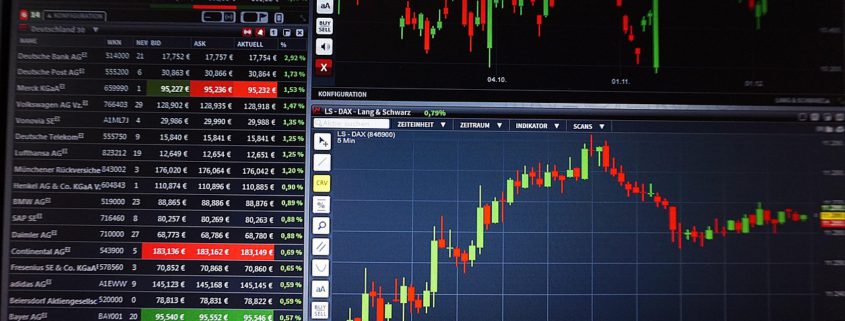A abstract by subject of the speech from Fed chair Powell
Inflation
-
Headline PCE inflation rose 2.6% y/y in July; core PCE up 2.9%.
-
Items costs rose 1.1%, reversing declines from 2024.
-
Housing providers inflation continues to pattern decrease; nonhousing providers stay barely above ranges traditionally in line with 2%.
-
Tariffs are visibly pushing up costs; results anticipated to build up in coming months.
-
Base case: tariff-driven worth will increase are short-lived, one-time shifts.
-
Dangers: may create wage–worth dynamics or carry inflation expectations, although Powell sees this as unlikely.
-
Dedication: Fed is not going to permit a one-time worth degree improve to turn out to be ongoing inflation.
-
Longer-term inflation expectations stay effectively anchored close to 2%.
Labor Market
-
Payroll development slowed to 35,000/month over final three months vs. 168,000/month in 2024.
-
Unemployment fee edged as much as four.2%, nonetheless traditionally low.
-
Labor pressure development has slowed sharply as a result of tighter immigration insurance policies.
-
Participation fee edged decrease; demand and provide for labor each softened.
-
Labor market seems “in steadiness,” however this steadiness displays slowing on each side, elevating draw back dangers to employment.
-
Dangers: a sudden downturn may set off rising layoffs and unemployment.
Financial Development
-
GDP slowed to 1.2% in H1 2025 vs. 2.5% in 2024.
-
Slowdown led primarily by weaker client spending.
-
Some slowing displays supply-side constraints (immigration, tariffs, regulatory and tax coverage adjustments).
-
Stability of dangers seems to be shifting towards weaker development and labor softness.
Financial Coverage Outlook
-
Present coverage stance stays restrictive however is now 100 bps nearer to impartial than a 12 months in the past.
-
Dangers are tilted to the upside for inflation and draw back for employment.
-
Framework requires balancing each side of twin mandate when targets are in rigidity.
-
Fed will “proceed fastidiously”, not on a preset course.
-
Choices will rely upon incoming information, dangers, and outlook.
Fed Coverage Framework (Revised Assertion)
-
Assessment carried out each 5 years; 2025 revisions mark the second public evaluate since 2012.
-
Key adjustments:
-
Eliminated language making the zero decrease certain (ELB) a defining function.
-
Eradicated “make-up” technique (versatile common inflation focusing on) → returned to versatile inflation focusing on.
-
Eliminated “shortfalls” wording on employment; clarified Fed might not tighten coverage solely on unsure estimates of max employment.
-
New language: employment might at instances run above real-time estimates with out dangers to cost stability.
-
If labor tightness threatens inflation, preemptive motion continues to be warranted.
-
-
Bolstered dedication to:
-
Nicely-anchored long-term inflation expectations.
-
Balanced method when inflation and employment targets battle.
-
2% inflation goal because the anchor for worth stability.
-
Key Themes & Commitments
-
Fed stays data-dependent, versatile, and forward-looking.
-
Value stability is crucial for financial well-being, particularly for weak households.
-
Dedication to evaluate framework each 5 years to adapt to structural adjustments.
-
Fed will proceed to pursue most employment and a pair of% inflation with full transparency and accountability.
Elaborating on the framework adjustments:
The Fed’s up to date coverage framework marks a major shift away from the 2020 “make-up” technique and a refocusing on readability and suppleness. By eliminating the dedication to permit inflation to run reasonably above 2% following durations of weak point, the Fed is acknowledging that this method was each impractical and politically pricey, particularly after the post-pandemic surge. Returning to a regular versatile inflation focusing on regime indicators that the Fed intends to keep away from locking itself into uneven commitments and can as a substitute react to circumstances in actual time.
The elimination of language tying coverage too carefully to the zero decrease certain (ELB) additionally broadens the Fed’s room to maneuver. Within the 2010s, the ELB was a defining constraint, however in at present’s higher-rate surroundings, that focus is much less related. By stepping again, the Fed is making clear that its framework is supposed to use throughout a wider vary of financial circumstances, not simply extended low-rate episodes. This gives better communication flexibility and reduces confusion about how the Fed will react in durations of elevated inflation or restrictive coverage.
Maybe most notable is the adjustment round employment language. The previous framework emphasised avoiding “shortfalls” from most employment, which regularly seemed that the Fed would tolerate overheated labor markets so long as inflation was subdued. The revised language makes it clear that employment can run above estimates with out forcing motion, but it surely additionally restores the choice for preemptive tightening if labor market tightness threatens worth stability. This transformation reinforces the Fed’s twin mandate steadiness, avoiding the notion that coverage is skewed towards jobs on the expense of inflation management.
General, the implications are that the Fed is recalibrating towards a extra balanced, much less inflexible framework. Policymakers have discovered from the previous 5 years that inflation dangers can materialize shortly, and that an excessive amount of emphasis on labor “shortfalls” or ELB-related considerations can undermine credibility. The brand new method offers the Fed better flexibility, clearer communication, and stronger anchoring of inflation expectations, all whereas protecting the two% goal firmly on the middle of its technique.
This text was written by Emma Wang at investinglive.com.




Leave a Reply
Want to join the discussion?Feel free to contribute!